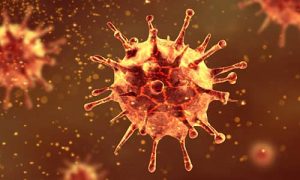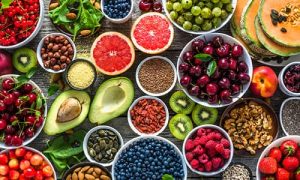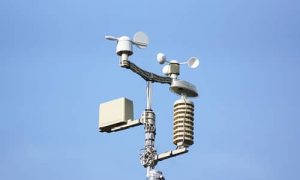Quality of Life & Health
IoT Adoption Improves our Living Conditions for a Better Health
Infection and Viruses

The Covid-19 crisis revealed that personnel are both the most important and most vulnerable assets of companies, industries, health and public-services, as well as government agencies. Private and public sector entities are now torn between the imperative to strictly follow personal hygiene and safety rules, enforced by stringent laws in some countries, and their critical challenge to maintain business continuity and avoid quarantine, while ensuring the safety of their personnel. World Health Organization (WHO) officials early stressed the importance for countries to test, isolate and trace new cases to suppress the spread of the virus. Suppression is definitely a key challenge during the outbreak and the transition out of confinement phases for industries, businesses and public services, back to the “new normal”. However, the logistical challenges of implementing effective contagious disease suppression across widely varied work, school and public settings are unprecedented. It is thus imperative to make it as convenient as possible for workforces to respect social distancing and avoid restricted areas and, at the same time, to ensure appropriate anonymous monitoring to prevent contagion and trace infected people interactions for preventive actions. The effective, close monitoring – known as contact tracing – is thus essential, to identify and isolate infected persons, list their contacts and ensure the appropriate testing and follow-up to break contamination chains. At the same time, vaccination is a key challenge to protect populations. Once vaccines are available, they must be appropriately distributed, stored and used, to keep their entire effectiveness. According to the International Air Transport Association’s Center of Excellence for Independent Validators in Pharmaceutical Logistics, 25% of vaccines and 20% of temperature-sensitive biopharmaceutical products, including plasma, are damaged or degraded by the time they arrive at their destination and lose their effectiveness. This is mainly due to incorrect shipping procedures and lack of continuous control of their shipping temperature range – usually between -58° Fahrenheit (-50°Celsius) and 5°F (-15°Celsius) if frozen, or 35°F (1,67°Celsius) to 46°F (-7,78°Celsius) otherwise -. Worldwide losses from vaccines exposed to temperatures outside the recommended range are estimated at $34.1 billion annually, including the cost of lost products, their replacement and the outlay of wasted logistics. Tracing vaccines shipment and distribution cold chain, at scale, is a key challenge.
LPWA Internet of Things (IoT) networks and IoT devices can assist in providing an effective, low-cost and anonymized answer to such contact-tracing challenges, without GPS or electronic devices such as smartphones and without raising any privacy or reliability issue. Workers, students and other people at risk are issued simple and inexpensive autonomous Bluetooth-enabled badges, key-rings or wristbands with a unique ID to anonymize the data. When these devices come in close proximity to each other, they scan and record each other’s ID through an encrypted code and regularly upload these “encounters” to a central database, connecting to beacons that transmit the information over the private local IoT network. This information is then stored in a secure database that is searchable and auditable for historic patterns (using anonymized ID contacts over time). Duly enabled government agencies, corporate-wellness and security officers, facility managers and other HRs officials responsible for mitigating pandemic exposure can then identify the wearer of the device, thanks to its unique ID, and trace previous movements of people who subsequently test positive or who develop symptoms. Officials then can alert these people and anyone they were in contact with for appropriate testing. The same way, IoT sensors and devices can help to measure temperature to exact degree and to compare it with acceptable norms and legally required levels for vaccines and temperature-sensitive biopharmaceutical products cold chain in any given transport. IoT sensors can help manage the cold-chain storage, shipping, transportation and distribution of vaccines and products that need a temperature-controlled environment and help address any potential errors quickly, before it is too late. These valuable products can also be traced with geofencing capabilities and an alert can be sent in case the parcels exit predefined boundaries.
Leveraging Kerlink industrial-grade, robust and versatile IoT connectivity, powered by LoRaWAN technology, can help to implement the requested contact-tracing and cold-chain monitoring solutions to enable worker, students and civil servants safely got back to work, schools and public buildings and to secure vaccines optimal distribution and appropriate storage. In many places, smartphones and public apps are not allowed nor a reliable solution. Using Bluetooth-enabled battery-powered devices can help to quickly set up a non-intrusive, anonymized, cost-efficient and reliable solution to protect workers back to work and ensure business continuity. The same way, LoRaWAN-enabled IoT sensors can collect key insights from drugs containers, cold rooms and freezers rooms to ensure the effectiveness, traceability and security of vaccines and biopharmaceutical products. IoT trackers using GPS or LoRaWAN network-based native geolocation capabilities, can help to monitor, trace and locate parcels for secure distribution. Deploying long-range, deep-indoor and highly reliable LoRaWAN IoT private networks in cold-chain transport, pharmacies, medical centers, hospitals and vaccination centers, ensures end-to-end control on vaccines conditions to reduce wastage and loss, for increased efficiency and faster population protection.
Food & Urban Agriculture

The global combination of growing population and booming urbanization generates an increasing pressure on food supply in cities and urban areas. The development of new farming practices, closer to consumers, like smart urban agriculture or hydroponics (aka aquaponics) is driving new needs in terms of production management and monitoring. Hydroponics is a type of agriculture that surprisingly does not use soil: water is bringing all the nutrients requested by the plants in order to grow. Among the estimated 16 nutrients needed by plants, three of them – carbon, hydrogen and oxygen – are accessible through air and water exchange. Others, including growth hormones and a mix of fertilizers and minerals designed to mimic traditional soil ecosystems, can be dissolved in water that irrigate plants’ roots. Hydroponics then try to efficiently replicate the key and vital elements of the plant’s natural environment and to deliver the right quantities of nutrients at the right time, during successive growth phases. As hydroponic farming offers a higher yield of calories per growing area[1] and as plants grown hydroponically can grow at least 20% faster than their soil-bound counterparts, the UN’s Food and Agriculture Organization (FAO) is helping to implement its use[2] in areas of food shortages to help produce more crops and feed more people. Using recirculation techniques to minimize waste, hydroponics also consumes less water – up to 70% to 90% less water used compared to traditional field crop watering methods[3] -, as there is no loss due to evaporation, inefficient irrigation, and soil erosion, among many other factors. While using fewer chemical herbicides and pesticides to fight pests, this smart urban agriculture technique can also give better control on the growing conditions of an optimized ‘local ecosystem’ to ensure continuous production and adapt crops to regional conditions, plants diversity or population tastes.
IoT sensors and devices, connected to an industrial-grade private IoT Network, can help smart urban farmers to automate the collection of data they need to monitor their hydroponic production. Microclimate conditions are essential for plants growth and IoT sensors efficiently monitor room and water temperature, air pressure, room humidity and moisture, nutrients levels, lights status (on/off) and illumination levels, for intelligent response. Adapting nutrient and minerals injection volume and timing, adjusting irrigation and water flows, optimizing fertilizer use can make the difference to reduce plants stress and waterlogging, resulting in higher quality plants. For each parameter and for each plant type, the requested thresholds can be defined and alerts notified in case these thresholds are reached (up and down) and related-risks identified to ensure continuous production. The collection of historical data can also help define growth patterns – with the increasing support of machine learning and artificial intelligence – and the better combination of environmental characteristics to adapt hydroponic farming to local urban constraints. IoT devices can also ensure the transparent traceability of smart urban farms perishable food, as increasingly expected by consumers. For example, IoT sensors can measure temperature to exact degree and compared with acceptable norms and legally required levels for cold chain in any given transport. IoT sensors can help manage the storage, shipping, short-distance transportation and local distribution of urban farm products that need a temperature-controlled environment. IoT sensors can finally ensure the appropriate monitoring of all appliances used for smart urban agriculture (HVAC, lights, water treatment and reuse, energy, room access) to avoid equipment downtime or sudden breakdown by enabling proactive condition-based maintenance (CBM).
Leveraging Kerlink IoT solutions to design a private IoT network to connect smart urban farms and hydroponic farming helps to monitor growing conditions 24/7, control relevant parameters and raise real-time alerts and notifications to take appropriate action, even remotely. This eliminates redundant and time-consuming tasks, like manual readings, and improves productivity with the use of advanced analytics based on real-time insights. Kerlink industrial-grade IoT connectivity, powered by LoRaWAN technology, enables urban farmers to understand and grant the optimal growing conditions for their plants, prevent and diagnose plants stress, predict production in order to optimize hydroponic farming efficiency and maximize yield and revenue. Because smart urban agriculture installations can be located in basements, undergrounds, rooftops or in other remote inbuilding areas, IoT devices and connected equipment require carrier-grade best-in-class LPWA indoor connectivity able to deeply penetrate building materials and to offer strong signal strength, in any type of RF environment. This is exactly what Kerlink is offering.
[3]https://www.researchgate.net
Air Quality

A study[1] published in 2018 by the US Environmental Protection Agency (EPA) highlighted that indoor air is 100 times more contaminated than outside air and that modern populations spend 80% to 90% of their time indoors, making indoor air more impactful on human health than outdoor air. In addition, this study demonstrated that, contrary to atmospheric pollution, indoor pollutants are about 1,000 times more likely to be inhaled and thus transmitted to the lungs, causing diseases. Another UK study[2], realized in late 2018 for the British Council for Offices (BSO), explained that task performance, based on concentration and attention, is directly affected by indoor environmental conditions such as temperature, relative humidity, and CO2 concentration. This study demonstrated that a granular control of temperatures and a proper monitoring of CO2 level can directly reduce the level of stress of people and improve their productivity and satisfaction levels. More broadly, air pollution is set to become the world’s top environmental cause of premature mortality, overtaking dirty water and lack of sanitation: the number of premature deaths from exposure to particulate matter (PM) leading to respiratory failures is projected to more than double worldwide, from just over 1 million today to nearly 3.6 million per year in 2050, with most deaths occurring in China and India[3]. The COVID-19 pandemics also revealed the central role played by air quality management in public buildings as one of the key factors in the fight against the spread of the virus. Every major health organization clearly stated the importance of improving heating, ventilation and air conditioning (HVAC) systems use to limit virus transmission by improving air quality, adapting temperature and humidity and limiting CO2 concentration (dry air and high CO2 levels are increasing the risk of the virus airborne transmission). Proactive precautionary measures like efficient and effective indoor air quality monitoring and control are well-established complementary solutions to fight airborne transmission of SARS-CoV-2 in public buildings, universities, schools, hospitals, shopping malls, retail shops, entertainment structures, public venues and any other public place gathering people in confined spaces.
IoT sensors and devices can deliver immediate contribution to deploy an efficient indoor air monitoring in public building. IoT sensors can analyze air quality, CO2 concentration, humidity level and temperature in real-time, raise alerts if predefined thresholds are reached and send this information to a centralized building management to quickly adapt HVAC settings. In a simpler way, IoT sensors can raise alerts on basic information like C02 concentration or air quality and inform workers, teachers, students, managers or users to open the windows for outdoor fresh air ventilation. IoT sensors and devices can help detect and measure outdoor emissions of pollutants, particles and obnoxious gas in the air. If the two main air pollutants of concern in cities are nitrogen dioxide (NO2) and particle matter (PM2.5), because of their serious impact on health and environment, other key pollutants pose serious health and environmental hazards, like carbon monoxide (CO) and dioxide (CO2), ozone (O3), nanoparticles such as dust (PM10), pollens (PM10-PM40), pollutants (PM2.5), viruses (<PM1), sulfur dioxide (SO2) and hydrogen sulfide (H2S) among others. IoT sensors can also monitor and records key variables like air temperature, wind, humidity and UV levels to collect additional data for combined intelligent processing and actionable data modelling.
Leveraging Kerlink industrial-grade IoT connectivity, powered by LoRaWAN technology, can efficiently assist public building managers and users to cost-efficiently, quickly and easily deploy, connect and manage IoT sensors for air quality. Indoor air quality is a fundamental component for workers health, productivity and comfort. Connecting air quality IoT sensors and other ambiance monitoring IoT devices to an industrial-grade private IoT network, with robust indoor coverage, can help to enhance microclimate conditions, fight the spread of diseases and viruses and achieve better working condition for occupants and visitors inside buildings, schools, universities, shopping centers, public places and entertainment venues. This move will bring immediate benefits for populations and citizens health.
[1] United States Environmental Protection Agency, Managing air quality – air pollutant types, October 2018, https://www.epa.gov
[2] https://emcoruk.com/workplace_productivity.pdf
[3] OECD (2012)


